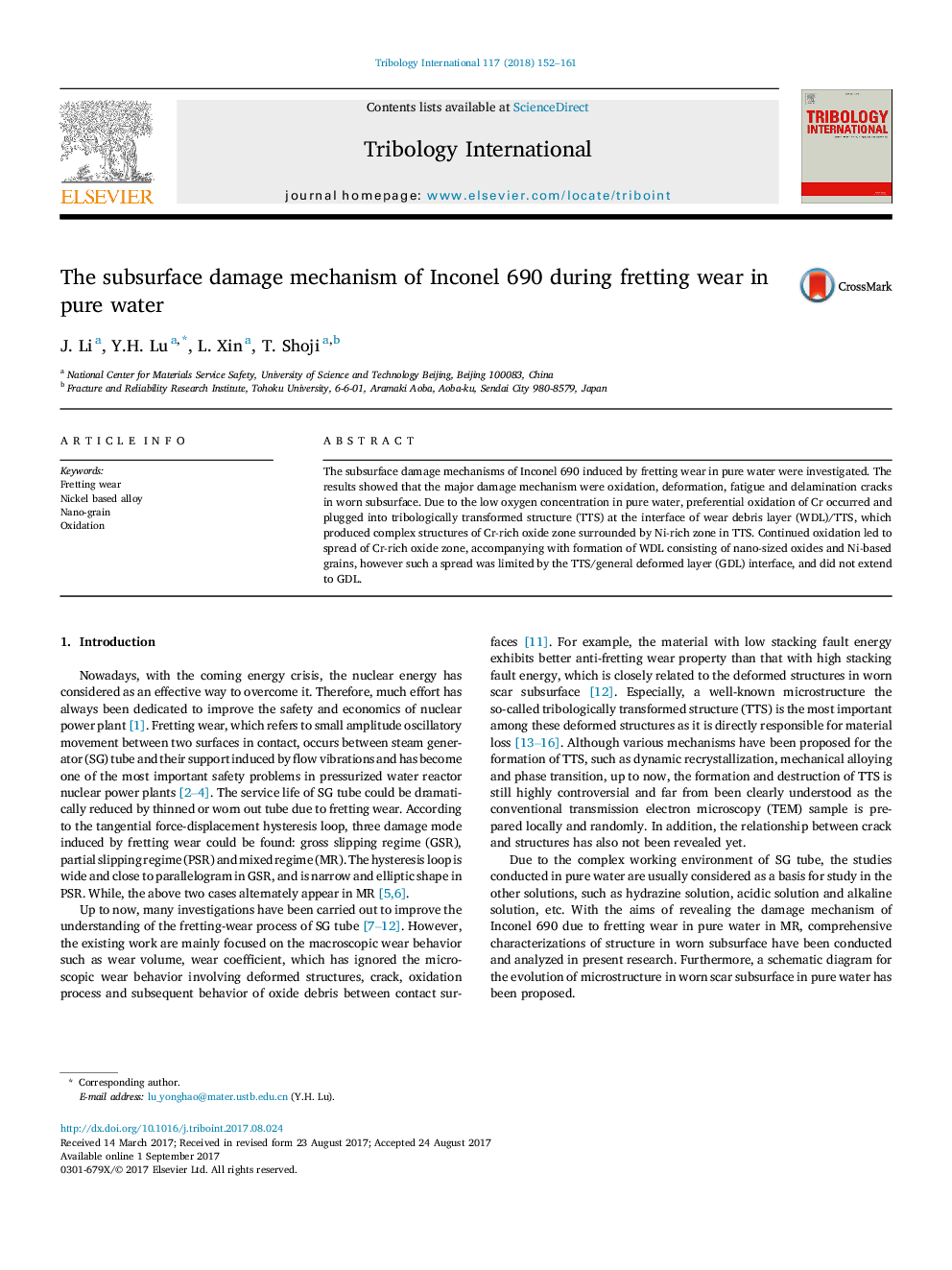| Article ID | Journal | Published Year | Pages | File Type |
|---|---|---|---|---|
| 4985754 | Tribology International | 2018 | 10 Pages |
â¢The damage mechanism was oxidation, deformation, fatigue and delamination cracks in worn subsurface.â¢The Cr oxidized and plugged into tribologically transformed structure (TTS) at interface of wear debris layer/TTS.â¢The oxidation caused Cr-rich oxide zone surrounded by Ni-rich zone in TTS, but didn't extend to general deformed layer.
The subsurface damage mechanisms of Inconel 690 induced by fretting wear in pure water were investigated. The results showed that the major damage mechanism were oxidation, deformation, fatigue and delamination cracks in worn subsurface. Due to the low oxygen concentration in pure water, preferential oxidation of Cr occurred and plugged into tribologically transformed structure (TTS) at the interface of wear debris layer (WDL)/TTS, which produced complex structures of Cr-rich oxide zone surrounded by Ni-rich zone in TTS. Continued oxidation led to spread of Cr-rich oxide zone, accompanying with formation of WDL consisting of nano-sized oxides and Ni-based grains, however such a spread was limited by the TTS/general deformed layer (GDL) interface, and did not extend to GDL.
Graphical abstractThe evolution of microstructure induced by fretting wear in the subsurface of Inconel 690 alloy in pure water.Download high-res image (348KB)Download full-size image
